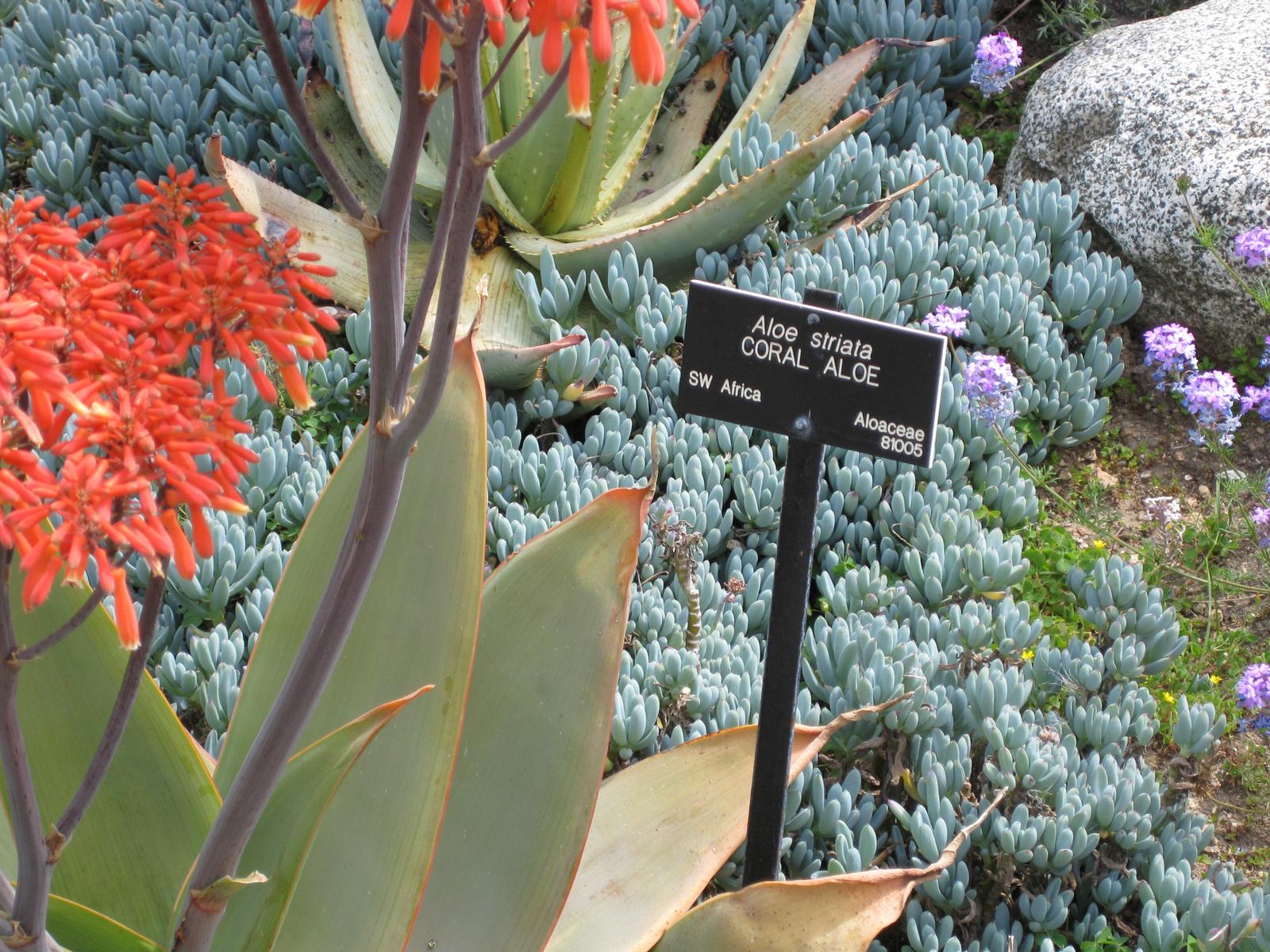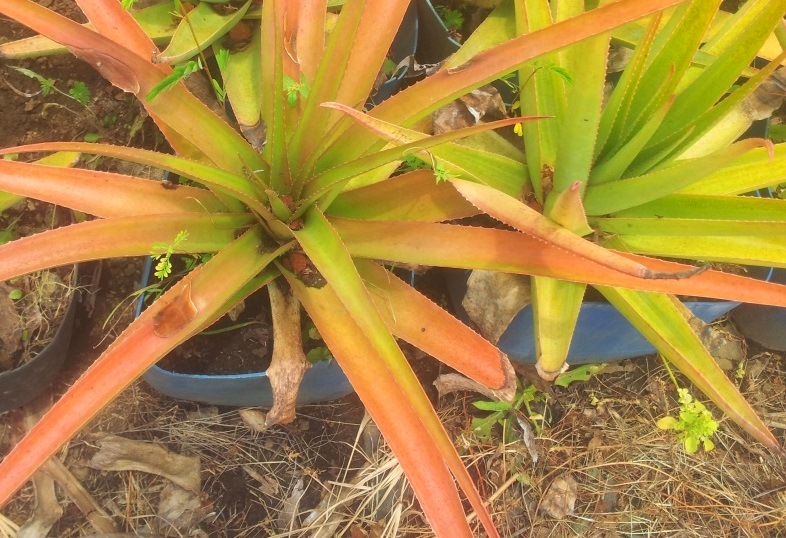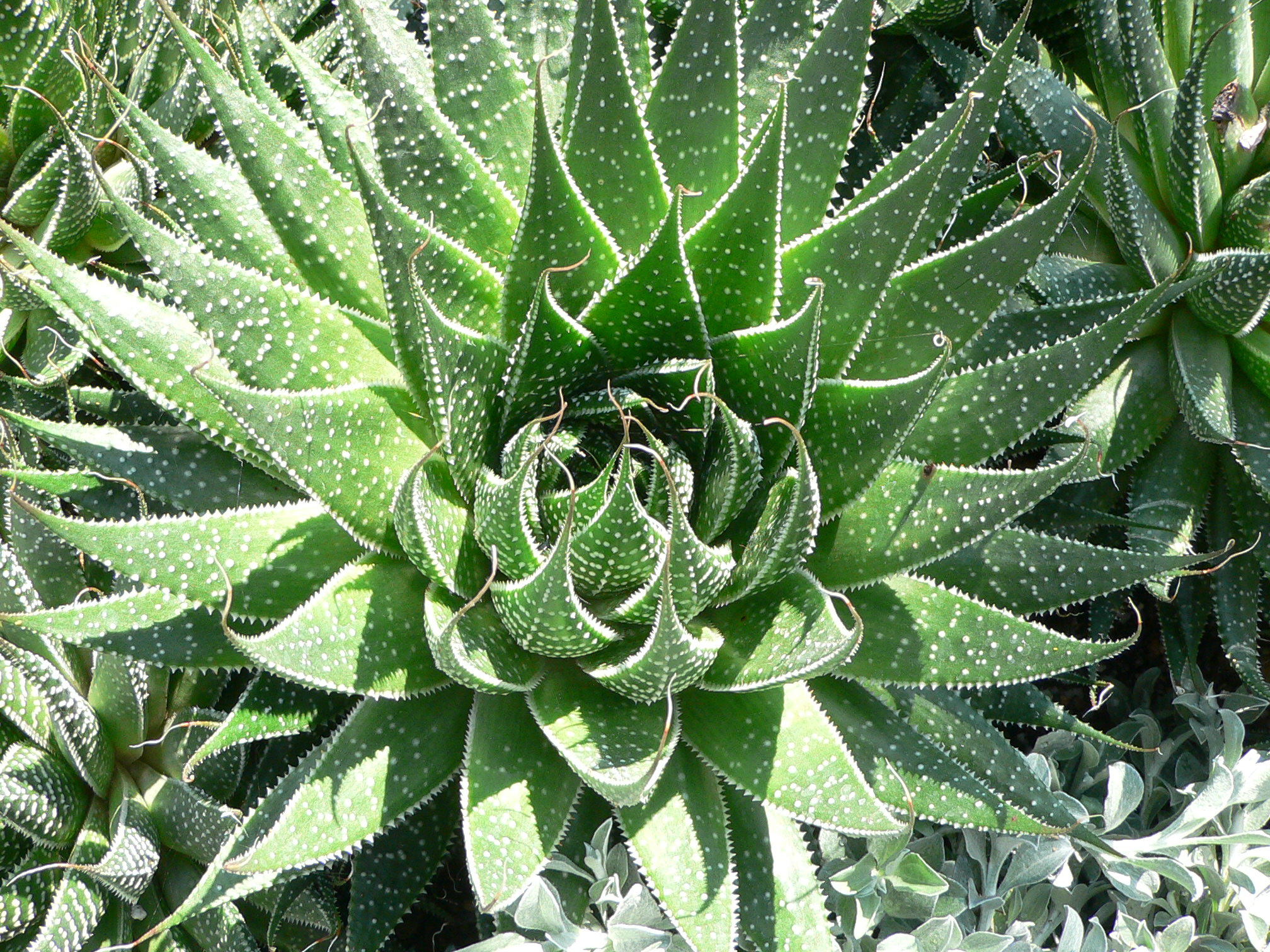|
Ă— Gasteraloe
Ă— ''Gasteraloe'' (also known as Ă— ''Gastrolea'') is a genus of hybrid plants, from mixtures of species from the ''Aloe'' or '' Aristaloe'' and ''Gasteria'' genera. Description Ă— ''Gasteraloe'' hybrids are typically stemless or almost stemless. Their succulent leaves, which are usually spotted or marked and have toothed margins, form rosettes. ''Gonialoe variegata'' and ''Aristaloe aristata'' are especially commonly used for these hybrids, as they are far more amenable to hybridization with gasterias than most other "aloes". List of known hybrids Among the range of Ă— ''Gasteraloe'' hybrids that are known so far are: * Ă— ''Gasteraloe bedinghausii'' = ''Aristaloe aristata'' Ă— ''Gasteria disticha'' * Ă— ''Gasteraloe beguinii'' = ''Aristaloe aristata'' Ă— ''Gasteria carinata'' var. ''verrucosa'' ** Ă— ''Gasteraloe beguinii'' nothovar. ''beguinii'' ** Ă— ''Gasteraloe beguinii'' nothovar. ''chludowii'' ** Ă—&thins ... [...More Info...] [...Related Items...] OR: [Wikipedia] [Google] [Baidu] |
Aloe
''Aloe'' (; also written ''Aloë'') is a genus containing over 650 species of flowering succulent plants.WFO (2022): Aloe L. Published on the Internet;http://www.worldfloraonline.org/taxon/wfo-4000001341. Accessed on: 06 Nov 2022 The most widely known species is '' Aloe vera'', or "true aloe". It is called this because it is cultivated as the standard source for assorted pharmaceutical purposes. Other species, such as ''Aloe ferox'', are also cultivated or harvested from the wild for similar applications. The APG IV system (2016) places the genus in the family Asphodelaceae, subfamily Asphodeloideae. Within the subfamily it may be placed in the tribe Aloeae.Stevens, P.F. (2001 onwards).Asphodelaceae. ''Angiosperm Phylogeny Website''. Retrieved 2016-06-09. In the past, it has been assigned to the family Aloaceae (now included in the Asphodeloidae) or to a broadly circumscribed family Liliaceae (the lily family). The plant ''Agave americana'', which is sometimes called "Americ ... [...More Info...] [...Related Items...] OR: [Wikipedia] [Google] [Baidu] |
Aloe Striata
''Aloe striata'', with the common name coral aloe, is a small, stemless South African Aloe species. Distribution This species occurs quite widely over the southern parts of the Cape Floristic Region, in the Eastern Cape Province and Western Cape Province of South Africa. It is found on rocky slopes in coastal and karoo areas. Description The coral aloe's specific epithet, ''striata'', means "stripes", and refers to the long lines (sometimes very faint) on its blue-green leaves. The leaves of this Aloe are not toothed, but have a smooth pink margin. Due to the similarity of their species names, ''Aloe striata'' is sometimes confused in literature with ''Aloiampelos striatula'' (syn. ''Aloe striatula'', hardy aloe) — a very different plant, found in the highlands of the Eastern Cape. Taxonomy The coral aloe forms part of the ''Paniculatae'' series of very closely related ''Aloe'' species, together with '' Aloe reynoldsii''. This species is often confused with its close rela ... [...More Info...] [...Related Items...] OR: [Wikipedia] [Google] [Baidu] |
Flora Of Southern Africa
Flora is all the plant life present in a particular region or time, generally the naturally occurring (indigenous) native plants. Sometimes bacteria and fungi are also referred to as flora, as in the terms ''gut flora'' or '' skin flora''. Etymology The word "flora" comes from the Latin name of Flora, the goddess of plants, flowers, and fertility in Roman mythology. The technical term "flora" is then derived from a metonymy of this goddess at the end of the sixteenth century. It was first used in poetry to denote the natural vegetation of an area, but soon also assumed the meaning of a work cataloguing such vegetation. Moreover, "Flora" was used to refer to the flowers of an artificial garden in the seventeenth century. The distinction between vegetation (the general appearance of a community) and flora (the taxonomic composition of a community) was first made by Jules Thurmann (1849). Prior to this, the two terms were used indiscriminately.Thurmann, J. (1849). ''Essai de Phy ... [...More Info...] [...Related Items...] OR: [Wikipedia] [Google] [Baidu] |
Asphodelaceae Genera
Asphodelaceae is a family of flowering plants in the order Asparagales. Such a family has been recognized by most taxonomists, but the circumscription has varied widely. In its current circumscription in the APG IV system, it includes about 40 genera and 900 known species. The type genus is ''Asphodelus''. The family has a wide but scattered distribution throughout the tropics and temperate zones. Many of the species are cultivated as ornamentals. A few are grown commercially for cut flowers. Two species of '' Aloe'' are grown for their leaf sap, which has medicinal and cosmetic uses. ''Xanthorrhoea'' is endemic to Australia. Description Members of the Asphodelaceae are diverse, with few characters uniting the three subfamilies currently recognized. The presence of anthraquinones is one common character. The flowers (the inflorescence) are typically borne on a leafless stalk ( scape) which arises from a basal rosette of leaves. The individual flowers have jointed stalks (p ... [...More Info...] [...Related Items...] OR: [Wikipedia] [Google] [Baidu] |
Gasteria Bicolor
''Gasteria bicolor'' (previously named ''Gasteria obliqua'' or ''Gasteria maculata'') is a species of succulent flowering plant in the family Asphodelaceae, native to the Eastern Cape, South Africa. Description This is a very variable species of ''Gasteria'', common in cultivation. It grows multiple proliferous stems, all covered in untidy masses of the shiny, mottled, colourful, succulent leaves. It usually forms rosettes, but can sometimes be distichous, especially in cultivation. The leaves can also occasionally develop a keel. Each leaf has a sharp point on the tip. The flowers generally appear on a long stem of about , that carries tubular bell-shaped pink to orange flowers. There are three major varieties, which grade into each other: * ''Gasteria bicolor'' var. ''bicolor'' (Haw.) The more widespread type variety. * ''Gasteria bicolor'' var. ''fallax'' (Haw.) A variety with narrow, elongated, linear, mottled leaves (c.140 x 11mm). Dense clumps are known from the Albany ... [...More Info...] [...Related Items...] OR: [Wikipedia] [Google] [Baidu] |
Aloe Purpurea
''Aloe purpurea'' (previously ''Lomatophyllum purpureum/borbonicum/aloiflorum''. Locally known as "Mazambron" or "Socotrine du Pays") is a species of ''Aloe'' endemic to the island of Mauritius, in the Indian Ocean, where it formerly occurred on dry rocky slopes and outcrops, the highland plateaus, and the forests of the west. It is part of a group of aloes which bear fleshy berries, and were therefore classed as a separate group, " Lomatophyllum". It is also one of only two ''Aloe'' species which naturally occur on Mauritius - both endemic and occurring nowhere else. Description This highly variable species grows an erect stem 7–10 cm in diameter, and can reach a height of 3 meters (unlike its closest relative '' Aloe tormentorii'' which is usually acaulescent or decumbent). The stem is topped by a dense rosette of up to 20 leaves. Its long, slender, ensiform to lanceolate leaves are more recurved and narrower than those of '' Aloe tormentorii'', reaching a length of ... [...More Info...] [...Related Items...] OR: [Wikipedia] [Google] [Baidu] |
Gasteria Acinacifolia
''Gasteria acinacifolia'' ("Dune Gasteria") is succulent plant native to the Eastern Cape Province, South Africa. Description It is the tallest of the ''Gasteria'' species (even larger than its close relative to the east, '' Gasteria excelsa''), with rosettes of light-green, sharp, stiff, spotted leaves, that are up to 1 meter long. The species name ''"acinacifolia"'' means ''"scimitar-leaves"'', and refers to how the smooth adult leaves curve, and end in a sharp point. The multi-branched inflorescence is often over a meter in height, with pink flowers and appears between September and December. The inflorescence is flat-topped (unlike that of '' Gasteria excelsa'') and has racemes that spread horizontally. It can be confused with '' Gasteria excelsa'' to the east, but ''G.excelsa'' has thicker, wider, straighter, smoother, darker leaves, that have fewer spots and much sharper, heavily-serrated margins, as well as a more erectly branching inflorescence. It can be confused wit ... [...More Info...] [...Related Items...] OR: [Wikipedia] [Google] [Baidu] |
Gasteria Carinata
''Gasteria carinata'' ("Bredasdorp Gasteria" or "Keeled Gasteria") is a small and variable succulent plant, native to the Western Cape Province, South Africa. Description This is a highly variable species. Typically it has sharp, triangular leaves, mottled in colour and channeled on their upper surface. The leaves have sharp points at their tips, and usually have keels in mature plants. The tiny spots on the leaves are arranged in bands, giving the leaves faint stripes (similar to '' Gasteria batesiana''). It is proliferous and can form dense clumps. Distribution The natural range of this species is the southern stretch of the Western Cape Province, South Africa. Here it occurs in rocky areas in Renosterveld and Fynbos vegetation, between Hermanus and Mossel Bay. Its closest relative is the enormous "Dune Gasteria ('' Gasteria acinacifolia'') to the east. Natural variation This is a variable species, with a range of officially defined varieties, and also with several un ... [...More Info...] [...Related Items...] OR: [Wikipedia] [Google] [Baidu] |
Aristaloe
''Aristaloe'' is a genus of evergreen flowering perennial plants in the family Asphodelaceae from Southern Africa. Its sole species is ''Aristaloe aristata'', known as guinea-fowl aloe or lace aloe. Naming and taxonomy This species is known locally as "serelei" (Sesotho for "slippery one") or "langnaaldaalwyn" (Afrikaans for "lacey aloe"). In English it is usually known as the "lace aloe" or "guinea-fowl aloe". The species was described by Adrian Hardy Haworth. Its species name ''"aristata"'' comes from the Latin for "bristly" or " awned", and refers to the lacy edges of the leaves. Its generic name has the same etymology. Recent phylogenetic studies have demonstrated that the genus ''Aloe'' is polyphyletic and that this unusual species is not in fact an aloe, but is more closely related to ''Astroloba'' and to the four ''"Robustipedunculares"'' species of ''Haworthia''. It has therefore been moved to its own genus, ''Aristaloe'', to account for its separate ancestry and genetic ... [...More Info...] [...Related Items...] OR: [Wikipedia] [Google] [Baidu] |
Gasteria Disticha
''Gasteria disticha'' is succulent plant native to the Western Cape, South Africa. Description This species of ''Gasteria'' has its strap-shaped leaves in two opposite rows (distichous), from whence its Latin species name comes. In its vegetative appearance, it looks very similar to the closely related species '' Gasteria pillansii'' to the north, and '' Gasteria brachyphylla'' to the south-east, both of which are also distichous. However the flowers are different, with ''G. disticha'' having tiny flowers of just 12–20 mm which have flower bases that are inflated or swollen for roughly two-thirds of the flower length. ''G. disticha'' often has leaves that undulate slightly, with wavy margins and a rough, mat surface. It is proliferous, with pink flowers and appears between September and December. Distribution It occurs in the Robertson Karoo vegetation of the Breede River Valley in the Western Cape, South Africa. It also extends marginally into the verges of ... [...More Info...] [...Related Items...] OR: [Wikipedia] [Google] [Baidu] |









